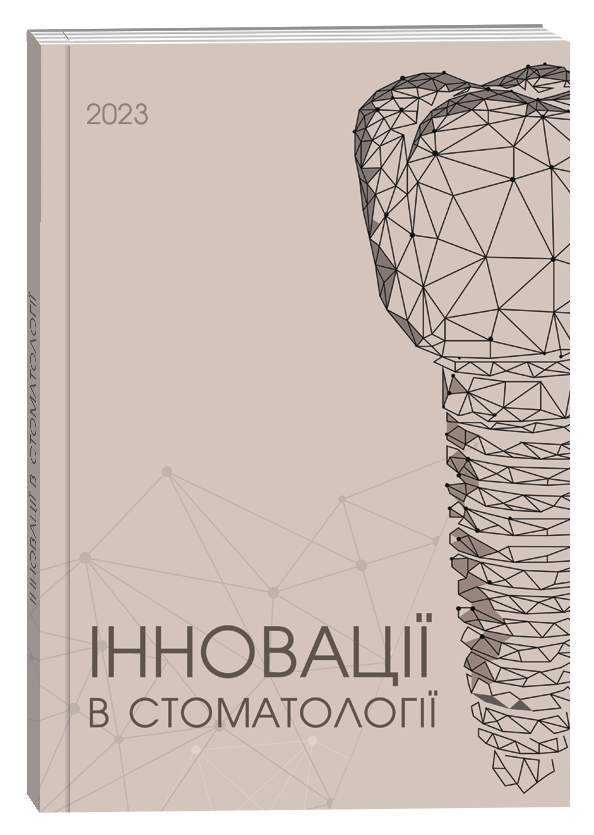EVALUATION OF THE EFFECTIVENESS OF PREVENTIVE MEASURES TO ENSURE LONG-TERM STABILITY OF ORTHOPEDIC STRUCTURES ON DENTAL IMPLANTS
DOI:
https://doi.org/10.35220/2523-420X/2025.1.19Keywords:
peri-implant tissues, professional and individual hygiene, orthopedic constructions, dental implantsAbstract
Problem statement. The stability of the results of complex orthopedic treatment of patients with dentition defects replaced by fixed structures on dental implants is determined by a number of factors, both local and general. In particular, the condition of bone and soft tissues in the area of missing teeth, the presence of periodontal diseases, parafunctions, correct positioning of the implant, the presence of keratinized gums, the choice of the type of fixation of orthopedic structures and the level of oral hygiene play an important role. Research objective.Evaluation of the effectiveness of preventive measures in patients with non-removable structures of dental prostheses with a screw fixation system on dental implants. Materials and methods of research. In a randomized examination, 57 patients with defects in the lower jaw dental arches, replaced by fixed orthopedic structures with a screw fixation system on dental implants aged 30 to 44 years, were involved. Clinical and radiographic studies were conducted to assess the hygienic condition of the oral cavity and peri-implant tissues in patients with dental implants. Determinants laid down in the classification of periodontal and peri-implant tissue diseases were used to analyze the condition of peri-implant tissues (EFP&AAP World Workshop, 2017). Conclusions. Therefore, carrying out professional oral cavity hygiene, combined with individual care, and proper care of non-removable orthopedic constructions with a screw fixation system on dental implants, as well as controlling the microbial biofilm around them, plays a leading role in maintaining the health of peri-implant tissues, ensuring the success of orthopedic rehabilitation of patients.
References
Ho-Yan Duong, Andrea Roccuzzo, Alexandra Stähli, Giovanni E. Salvi, Niklaus P. Lang, Anton Sculean. (2022). Oral health-related quality of life of patients rehabilitated with fixed and removable implant-supported dental prostheses. Periodontology 2000, 1(88), 201–237. DOI: 10.1111/prd.12419
Cattoni F., Tetè G., Uccioli R., Manazza F., Gastaldi G., Perani D. (2020). An fMRI Study on Self-Perception of Patients after Aesthetic Implant-Prosthetic Rehabilitation. International Journal of Environmental Research and Public Health, 2(17), 588. doi: 10.3390/ijerph17020588
(2018). Classification of Periodontal and Peri- Implant Diseases and Conditions. Proceedings of the World Workshop Jointly Held by the American Academy of Periodontology and European Federation of Periodontology. Kenneth, S. Kornman, Maurizio, S. Tonetti. (Ed) URL: https://onlinelibrary.wiley.com/toc/1600051x/2018/45/S20
Scarano, A., Khater, A. G. A., Gehrke, S. A., Serra, P., Francesco, I. et al. (2023). Current Status of Peri-Implant Diseases: A Clinical Review for Evidence-Based Decision Making. J. Funct.Biomater, 14, 210. DOI: https://doi.org/10.3390/jfb14040210
Araujo, M. G., Lindhe, J. (2018). Peri-implant health. J Periodontol, 89, 1, 249–256. doi: 10.1002/JPER.16-0424
Berglundh, T., Armitage G., Araujo M. G., Avila- Ortiz G., Blanco J., Camargo P. M., Chen S., Cochran D., Derks J., Figuero E., et al. (2018). Peri-implant diseases and conditions: Consensus report of workgroup 4 of the 2017 World Workshop on the Classification of Periodontal and Peri-Implant Diseases and Conditions. J. Clin. Periodontol, 45, 286–291. DOI: 10.1111/jcpe.12957
Rokaya, D., Srimaneepong, V., Wisitrasameewon, W., Humagain, M., Thunyakitpisal, P. (2020). Peri-implantitis Update: Risk Indicators, Diagnosis, and Treatment. Eur J Dent, 14(4), 672-682. doi: 10.1055/s-0040-1715779
Dalago, H. R., Schuldt, Filho, G., Rodrigues, M. A., Renvert, S., Bianchini, M. A. (2017). Risk indicators for Peri-implantitis. A cross-sectional study with 916 implants. Clin Oral Implants Res, 28(2), 144–150. doi: 10.1111/clr.12772
Merin, R. L. (2014). Repair of peri-implant bone loss after occlusal adjustment: a case report. J Am Dent Assoc, 145(10), 1058-62. doi: 10.14219/jada.2014.65
Pellegrini, G., Canullo, L., Dellavia, C. (2016). Histological features of peri-implant bone subjected to overload. Ann Anat, 206, 57-63. doi: 10.1016/j.aanat.2015.02.011
Swalsky, A., Noumbissi, S. S., Wiedemann, T. G. (2024). The systemic and local interactions related to titanium implant corrosion and hypersensitivity reactions: a narrative review of the literature. Int J Implant Dent, 10(1), 58. doi: 10.1186/s40729-024-00578-3








